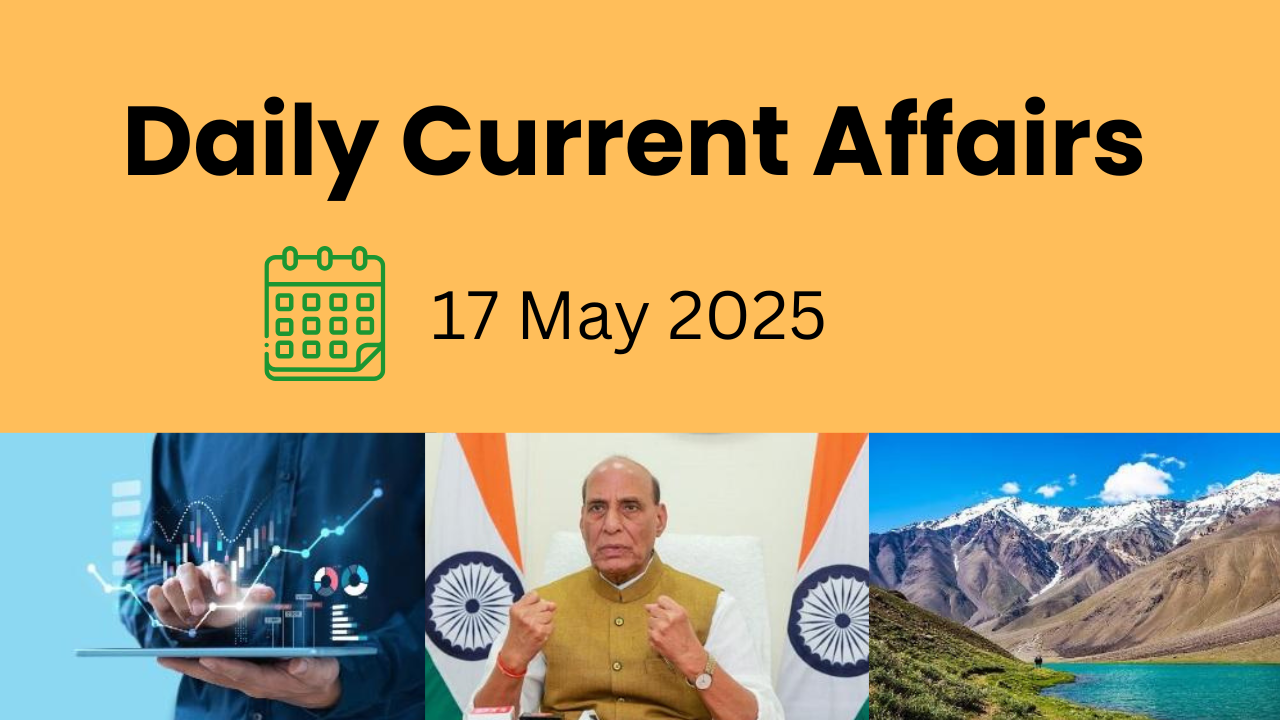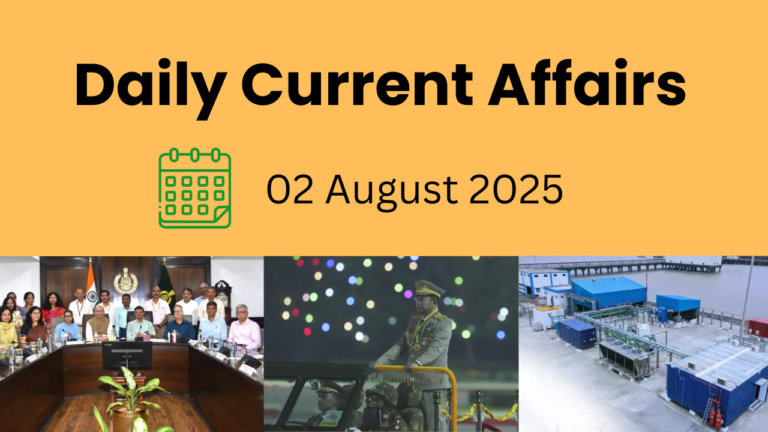1. Presidential Reference to Supreme Court: Clarifying Time Limits on Assent to State Bills
Context: In a landmark constitutional development, President Droupadi Murmu has invoked Article 143 of the Indian Constitution, seeking the Supreme Court’s advisory opinion on whether the President and State Governors must adhere to specific timelines while acting on State Legislature Bills.
Background: Delay in Assent and the ‘Pocket Veto’ Dilemma
Traditionally, Governors and the President of India are not constitutionally bound by a strict timeframe to assent to or return a Bill passed by a State Legislature. This has often led to indefinite delays, a practice informally known as a “Pocket Veto”—a term not mentioned in the Constitution but used widely in political and legal discourse.
Recent Supreme Court Verdict:
In a recent judgment, the Supreme Court addressed this ambiguity and ruled that Governors cannot withhold or delay assent indefinitely, especially after a Bill has been re-passed by the State Assembly.
Timelines Set by the Court:
- One month to act on re-passed Bills.
- Three months to act when withholding assent contrary to the State Cabinet’s advice.
This ruling has triggered a deeper debate about the judicial enforceability of timelines on constitutional authorities and whether the Supreme Court, under Article 142, can compel the executive to act within set periods.
Article 142: Ensuring Complete Justice
Article 142 grants the Supreme Court the authority to pass any decree or order necessary to ensure complete justice in any case before it.
Significance of Article 142:
- Allows the Court to fill legislative or executive gaps in the interest of justice.
- Empowers the Court to protect public interest, human rights, and constitutional values.
- Enhances the Supreme Court’s position as the guardian of the Constitution.
Criticism:
Some experts argue that Article 142 can potentially blur the separation of powers, inviting concerns of judicial overreach.
Article 143: Presidential Consultation with the Supreme Court
Article 143 empowers the President to seek the Supreme Court’s advisory opinion on questions of law or fact that are of public importance.
Key Features of Article 143:
- Article 143(1): President may refer legal questions for the SC’s opinion.
- The Court’s response is advisory—not binding but carries significant moral and legal weight.
- Hearings must be conducted by a Constitution Bench of at least five judges (as per Article 145(3)).
Historical Context:
This provision has its roots in the Government of India Act, 1935, and has been used by the President at least 15 times since 1950, including in high-stakes cases like:
- The Ayodhya Land Dispute (1993)
- Punjab Termination of Agreements Act (2004)
Why This Reference Matters: A Federal Turning Point:
This move is not merely legal—it is a constitutional inflection point for Indian federalism. It raises critical questions:
- Can the judiciary impose accountability on constitutional functionaries?
- Should there be defined timeframes for executive decisions on legislative actions?
- How can democratic mandates of state legislatures be safeguarded from executive inaction?
Conclusion: Shaping the Balance of Power
This Presidential reference to the Supreme Court under Article 143 could redefine the contours of executive discretion, bolster legislative sanctity, and reinforce the judiciary’s role in upholding democratic processes.
The Supreme Court’s opinion, while not binding, could shape future legislation, encourage governance reforms, and set a precedent for time-bound accountability in state-centre relations.
2. India Raises Concern Over Pakistan’s Nuclear Arsenal
Context: In a recent development, India’s Defence Minister has raised serious concerns over the security and accountability of Pakistan’s nuclear arsenal, urging that it be placed under the watch of the International Atomic Energy Agency (IAEA). This move reflects growing regional and global anxieties about nuclear safety and the risk of proliferation.
Pakistan’s Nuclear Posture: A Threat Without Restraint
Unchecked Expansion:
Pakistan became a declared nuclear power in 1998, following India’s own nuclear tests. Since then, it has rapidly expanded its nuclear capabilities, with an estimated 170 nuclear warheads today.
Unlike India, which adheres to a No-First-Use (NFU) policy, Pakistan has no such declared restraint, making its nuclear doctrine opaque and unpredictable.
Outside Global Norms:
Pakistan remains outside the Nuclear Non-Proliferation Treaty (NPT), raising red flags globally, particularly because of:
- Past nuclear proliferation links, including the A.Q. Khan network.
- Lack of formal commitment to disarmament principles or international verification mechanisms.
NPT: A Framework Pakistan Rejects
The Treaty on the Non-Proliferation of Nuclear Weapons (NPT), signed in 1968 and in force since 1970, aims to:
- Prevent nuclear weapon spread.
- Promote peaceful nuclear energy.
- Facilitate nuclear disarmament.
Only five nations are recognized as Nuclear Weapon States (NWS) under this treaty. India, Pakistan, Israel, and North Korea have not signed the NPT, citing its discriminatory nature.
IAEA: Global Nuclear Watchdog
About the IAEA:
The International Atomic Energy Agency, established in 1957, is the world’s foremost body promoting safe, secure, and peaceful use of nuclear energy.
- Headquarters: Vienna, Austria
- Members: 180 countries (as of November 2024)
- Motto: “Atoms for Peace and Development”
Core Functions:
- Safeguards & Verification: Ensures that nuclear materials are not diverted for weapons.
- Nuclear Safety & Security: Supports nations in improving nuclear standards and countering nuclear terrorism.
- Technical Cooperation: Helps developing countries harness nuclear technology for health, agriculture, and energy.
The IAEA plays a vital role in non-proliferation diplomacy, especially in inspections and monitoring (e.g., in Iran’s case).
India’s Commitment to Responsible Nuclear Conduct:
India, though not an NPT signatory, has taken several steps to demonstrate nuclear responsibility and transparency:
- Ratified the Additional Protocol (2014): Allows greater IAEA access to India’s civil nuclear program.
- Signed item-specific safeguards agreements with the IAEA.
- Joined key export control regimes:
- Missile Technology Control Regime (MTCR) – Joined in 2016.
- Wassenaar Arrangement – Joined in 2017.
- Australia Group – Joined in 2018.
India has also aligned its export controls with the norms of the Nuclear Suppliers Group (NSG), although it remains outside the group, alongside Pakistan and Israel.
India-Pakistan Nuclear Installation Agreement:
In an effort to reduce nuclear risks, India and Pakistan signed the Non-Nuclear Aggression Agreement (NAA) in 1988, effective from 1991.
Key Provisions:
- Annual exchange of nuclear facility locations.
- Prevents attacks on each other’s civilian nuclear installations.
However, this agreement:
- Does not mandate transparency in terms of activities or capabilities.
- Lacks depth in preventing broader military confrontations.
India has repeatedly called for expanding the agreement to include civilian and economic infrastructure, but Pakistan has consistently refused.
Why India is Concerned:
- Strategic Instability: Pakistan’s lack of a No-First-Use policy heightens the risk of a nuclear first strike in a crisis.
- Nuclear Brinkmanship: Islamabad often uses its nuclear capability as a deterrent to offset India’s conventional military edge.
- Terror Risks: Concerns persist about internal security in Pakistan, raising fears that non-state actors could potentially access nuclear materials.
Conclusion: A Call for Oversight and Dialogue
India’s demand for IAEA supervision over Pakistan’s nuclear arsenal is not just about bilateral rivalry—it is a global call for accountability. In an age where nuclear risks are rising due to geopolitical tensions and terror threats, greater transparency, dialogue, and regional arms control are essential for long-term peace in South Asia.
3. Account Aggregators: Laying the Foundation for India’s Consent-Based Data Economy
Context: With the advent of the Digital Personal Data Protection (DPDP) Act, 2023, and the draft DPDP Rules, 2025, India is taking a transformative step toward empowering individuals with control over their personal data. A key pillar of this initiative is the Account Aggregator (AA) framework, which now serves as a blueprint for developing Consent Managers (CMs) under the new data protection regime.
What is an Account Aggregator (AA)?
An Account Aggregator is a Non-Banking Financial Company (NBFC-AA) regulated by the Reserve Bank of India (RBI). It acts as a digital bridge between institutions that hold your financial data and those that need access to it — all based on your explicit consent.
Key Features:
- Operates on a real-time, consent-based, and encrypted data-sharing system.
- Acts as a conduit between:
- Financial Information Providers (FIPs): e.g., banks, mutual funds, insurance firms.
- Financial Information Users (FIUs): e.g., lenders, wealth advisors, insurers.
- Does not store, modify, or analyze data — it merely facilitates secure transfer.
How it Works:
- A user links their bank accounts to an AA.
- Provides consent to share specific data (e.g., bank statements) with a FIU.
- The AA fetches the data from the relevant FIP and delivers it securely to the FIU.
Examples of Licensed AAs:
- CAMS FinServ – Backed by Computer Age Management Services.
- PhonePe AA – A subsidiary of PhonePe, utilizing its vast digital ecosystem.
Transitioning to the Consent Manager (CM) Framework under DPDP
The DPDP Act, 2023 introduces the concept of Consent Managers (CMs) — entities entrusted with managing an individual’s consent lifecycle in the data-sharing ecosystem.
Role of Consent Managers:
- Facilitate consent collection, modification, and withdrawal.
- Ensure secure data transfers between Data Principals (individuals) and Data Fiduciaries (organizations using data).
- Act as trusted intermediaries, much like AAs, but across all sectors, not just financial services.
Draft DPDP Rules, 2025: Key Proposals for Consent Managers
To build an effective and scalable CM ecosystem, the draft rules propose several foundational elements:
- Mandatory Registration: Consent Managers must register with the Data Protection Board (DPB) to ensure oversight and regulatory compliance.
- Sector-Specific Consent Managers: Encourages development of domain-specific CMs (e.g., for health, finance, education), provided they adhere to common APIs and technical protocols.
- Commercial Flexibility: Allows CMs to enter into business arrangements with Data Fiduciaries, enabling sustainable business models while preserving user trust.
Why a Unified Consent Infrastructure Matters:
- Avoids Redundancy: Aligning the AA and CM frameworks avoids duplication and unnecessary complexity across sectors.
- Boosts Efficiency: Leverages the proven efficiency of the AA model, accelerating the nationwide rollout of Consent Managers.
- Fosters Innovation : Empowers startups, fintechs, and public platforms to develop secure, user-centric data-sharing services.
- Supports Digital Public Infrastructure (DPI) : Strengthens India’s vision for a secure, interoperable, and citizen-first digital ecosystem, building on success stories like UPI and DigiLocker.
India’s Moment to Lead in Data Empowerment:
India stands at the cusp of redefining global standards in data protection and empowerment. By harmonizing the Account Aggregator model with the Consent Manager regime under the DPDP framework, the country can establish a scalable, transparent, and inclusive data governance system.
This unified approach not only safeguards personal data but also unlocks massive potential for digital innovation, financial inclusion, and user autonomy in the digital age.
4. Back From the Brink: Blyde Rondavel Flat Gecko Rediscovered After 34 Years
Context: In a thrilling breakthrough for conservation biology, the Blyde Rondavel Flat Gecko, a species that had gone unrecorded for over three decades, was rediscovered in April 2025 in the rugged Blyde River Canyon of Mpumalanga Province, South Africa. This marks the first confirmed sighting of the elusive lizard since its initial discovery in 1991.
About the Blyde Rondavel Flat Gecko:
- This flat-bodied gecko reaches a length of 8–9 cm when fully grown.
- It is likely rock-dwelling, specially adapted to cliff habitats and isolated rocky outcrops, which contributes to its elusiveness and difficulty in detection.
- After its original discovery, the gecko vanished from all records, sparking fears of extinction and even doubts about its taxonomic validity.
- Due to the absence of sufficient data, it had been listed as “Data Deficient” by the International Union for Conservation of Nature (IUCN).
Rediscovery Confirmed by the Endangered Wildlife Trust (EWT):
The rediscovery was made during a targeted research expedition by the Endangered Wildlife Trust (EWT) to an inaccessible rocky escarpment of the canyon—precisely the site where the species was first found.
This marks the fifth successful rediscovery of a species by EWT in recent years, joining an impressive list of once-thought-lost creatures, including:
- A dune mole, rediscovered after 80 years,
- A rare butterfly,
- An unrecorded lizard, and
- A frog species, all of which had similarly disappeared from scientific sight.
A Victory for Conservation and Biodiversity:
The reappearance of the Blyde Rondavel Flat Gecko is a testament to the importance of sustained fieldwork in even the most inaccessible habitats. It also reaffirms the critical value of protected ecosystems like the Blyde River Canyon, which serve as refuges for unique and often overlooked species.
This rediscovery contributes to a growing list of so-called “Lazarus species”—organisms presumed extinct that reemerge, surprising scientists and conservationists alike.
Looking Ahead:
The find is expected to lead to:
- New ecological studies on the gecko’s behavior and habitat,
- Updated conservation assessments by the IUCN, and
- Heightened interest in protecting other potentially hidden species in remote ecosystems.
It also serves as a beacon of hope for biodiversity conservation, proving that even in a rapidly changing world, nature still holds secrets waiting to be uncovered.
5. India’s Largest Conservation Reserve Declared in Himachal: Tsarap Chu Joins the Biodiversity Map
Context: In a significant step towards ecological preservation, the Himachal Pradesh government has officially notified the Tsarap Chu Conservation Reserve in the Lahaul-Spiti region, making it India’s largest conservation reserve with an area of 1,585 sq. km.
Strategic Location in the Cold Desert Biodiversity Hotspot:
Nestled in the remote trans-Himalayan terrain, Tsarap Chu Conservation Reserve shares its boundaries with:
- The Union Territory of Ladakh to the north,
- Kibber Wildlife Sanctuary and the Malang Nala-Lungar Lungpa stretch to the east,
- Kabjima Nala to the south, and
- The famed Chandratal Wildlife Sanctuary to the west.
This ecologically vital zone lies at the confluence of the Unam River and Charap Nala, acting as a critical catchment area for Charap Nallah.
Wildlife Corridor with Rich Biodiversity:
The reserve plays a pivotal role as a wildlife corridor, linking Kibber and Chandratal wildlife sanctuaries—ensuring genetic flow and safe movement of species across habitats.
It is recognized as one of Himachal Pradesh’s high-density snow leopard zones. Alongside the elusive snow leopard, the region is home to:
- Tibetan wolf
- Bharal (blue sheep)
- Himalayan ibex
- Kiang (Tibetan wild ass)
- Tibetan argali (Great Tibetan sheep)
The skies of Tsarap Chu are no less impressive, featuring rare high-altitude avian species such as the:
- Rose Finch
- Tibetan Raven
- Yellow-billed Chough
Community-Driven Conservation Governance:
The reserve will be overseen by a Conservation Reserve Management Committee, which includes:
- Forest department officials
- Wildlife experts
- Local Panchayat representatives
This participatory model aims to balance conservation goals with the livelihood needs of the local communities, many of whom follow traditional nomadic pastoralism.
A Boost to Eco-Tourism and Scientific Research:
Given its unique landscape and rich fauna, the reserve is poised to:
- Promote responsible eco-tourism
- Support high-altitude biodiversity studies
- Encourage youth-led conservation efforts through community involvement and awareness campaigns.
Conclusion: A Landmark for India’s Cold Desert Conservation
The creation of the Tsarap Chu Conservation Reserve marks a new era in Himalayan ecosystem preservation, showcasing how biodiversity conservation, indigenous involvement, and ecological connectivity can go hand in hand. It not only protects fragile mountain ecosystems but also strengthens India’s commitment to global biodiversity targets under frameworks like the Kunming-Montreal Global Biodiversity Framework (GBF).
6. India to Dive into the Depths: ‘Samudrayaan Mission’ Set for Launch by End of 2026
Context: In a landmark announcement, the National Institute of Ocean Technology (NIOT) has confirmed that India’s Samudrayaan Mission will be launched by the end of 2026. This ambitious venture is part of the broader Deep Ocean Mission (DOM) and marks India’s entry into elite global club of countries capable of manned deep-sea expeditions.
So far, only five nations—the U.S., Russia, China, France, and Japan—have achieved such underwater milestones.
Unveiling Matsya-6000: India’s Deep-Sea Chariot
At the heart of Samudrayaan is ‘Matsya 6000’, a 4th-generation human-rated submersible vehicle capable of diving to a depth of 6,000 metres (6 km).
Key Features of Matsya 6000:
- Developed by NIOT-Chennai, under the Ministry of Earth Sciences.
- Successfully completed wet testing.
- Endurance: 12 hours of standard operation and up to 96 hours in emergency mode.
- Designed to carry three humans, supported by life systems and scientific equipment.
- Constructed with titanium alloy pressure hull, suitable for extreme deep-sea pressure conditions (over 600 times atmospheric pressure).
Mission Objectives: More Than Just Exploration
The Samudrayaan Mission will open up vast possibilities in:
- Deep-sea scientific research
- Mapping of marine biodiversity
- Exploration of polymetallic nodules, rare-earth metals, and hydrothermal vents
- Survey of deep-living biological resources with potential pharmaceutical value
- Development of ocean observation technologies
- Laying the foundation for deep-sea tourism and robotics
This initiative will greatly enhance India’s efforts to sustainably harness its blue economy potential, which already contributes nearly 4% to the national GDP.
Deep Ocean Mission (DOM): Driving India’s Blue Economy
About DOM:
- Launched: 2021
- Tenure: 5 years
- Nodal Ministry: Ministry of Earth Sciences (MoES)
- Goal: Develop deep-sea technologies, promote resource assessment, and ensure the sustainable use of the ocean’s unexplored depths.
Objectives of DOM Include:
- Deep-sea mining and exploration of energy resources
- Mapping the ocean floor and biodiversity
- Creation of advanced marine infrastructure and underwater robotics
- Development of climate change forecasting tools
- Coastal and island community development
Why Samudrayaan Matters for India:
- Enhances India’s strategic capabilities in the Indian Ocean region
- Supports self-reliance in ocean exploration technology
- Boosts scientific innovation and marine education
- Helps mitigate climate and ecological challenges through better ocean data
Conclusion: A Giant Leap into the Blue Frontier
With Samudrayaan, India is not just diving into the ocean—it’s diving into the future. By integrating cutting-edge technology, environmental sustainability, and strategic marine development, the mission will place India on the global map of deep-sea exploration. This milestone aligns with the broader vision of Atmanirbhar Bharat and propels the nation toward scientific sovereignty in marine exploration.




